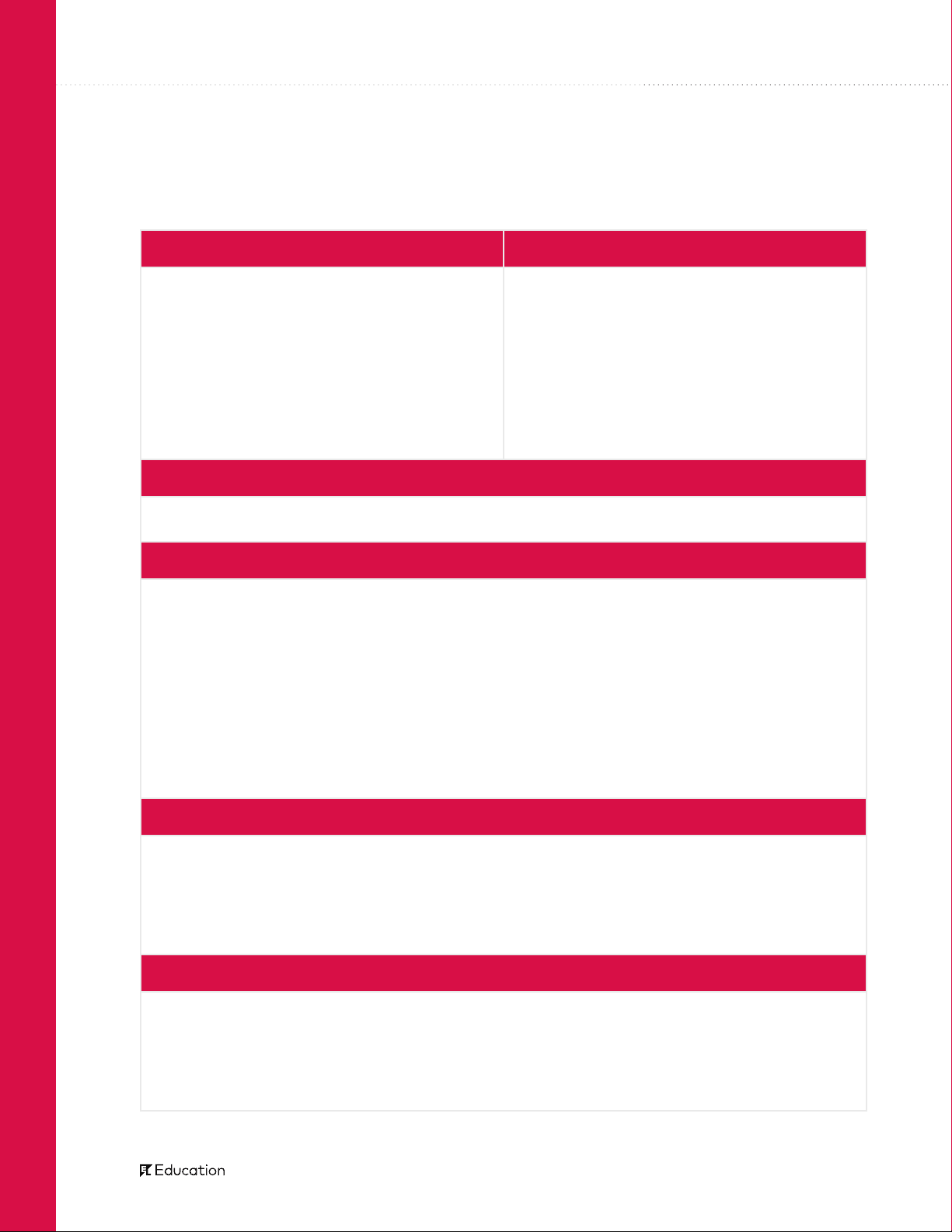
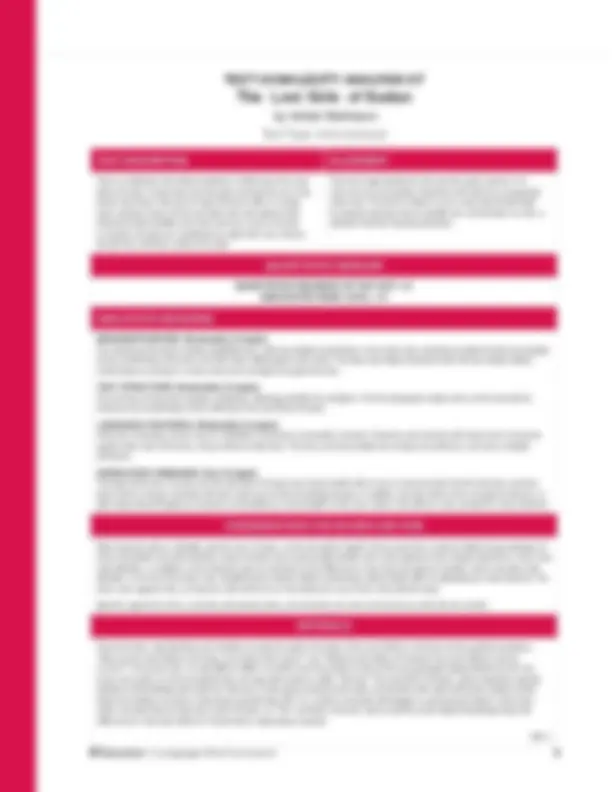
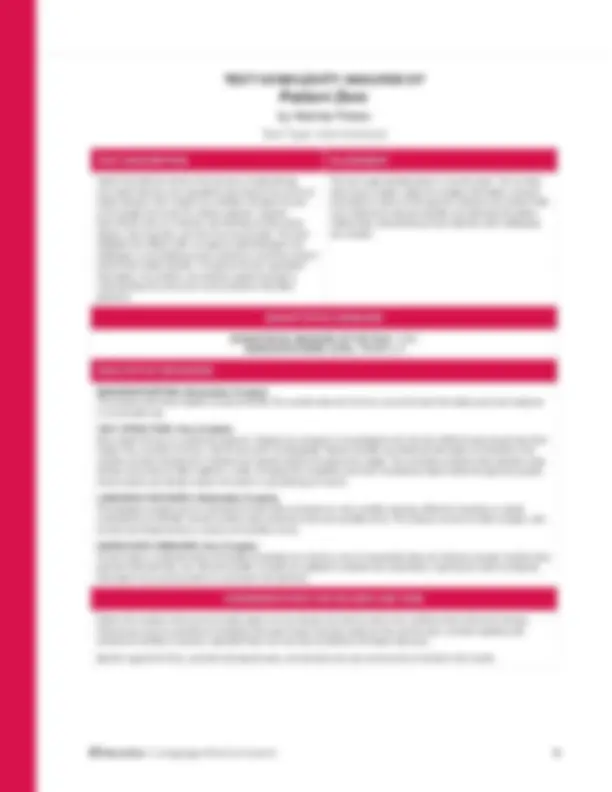
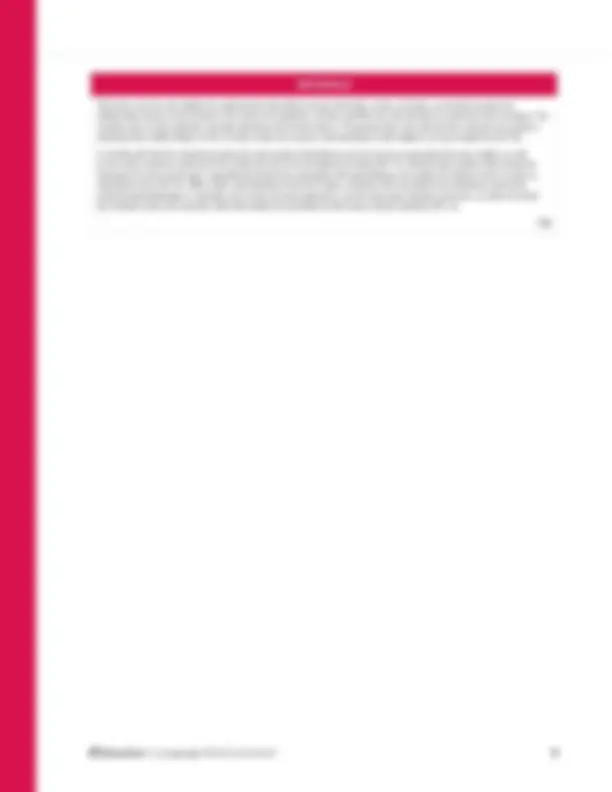
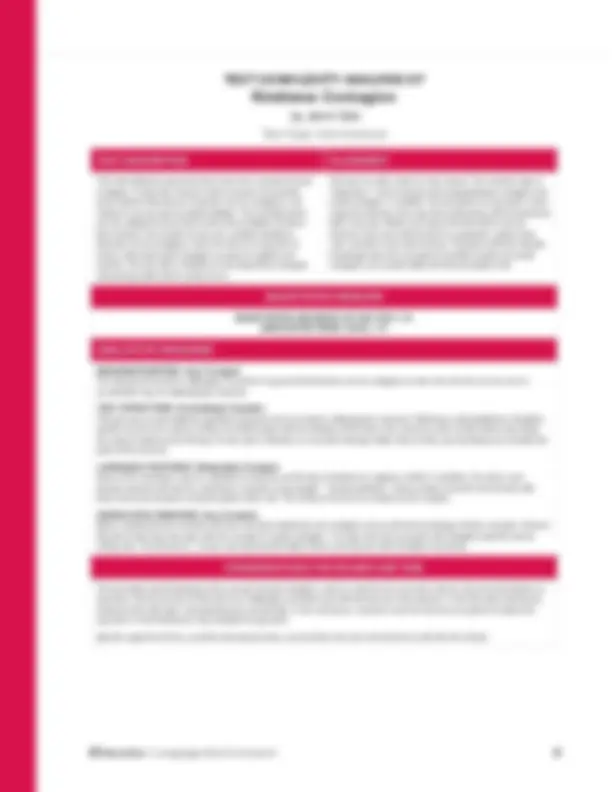
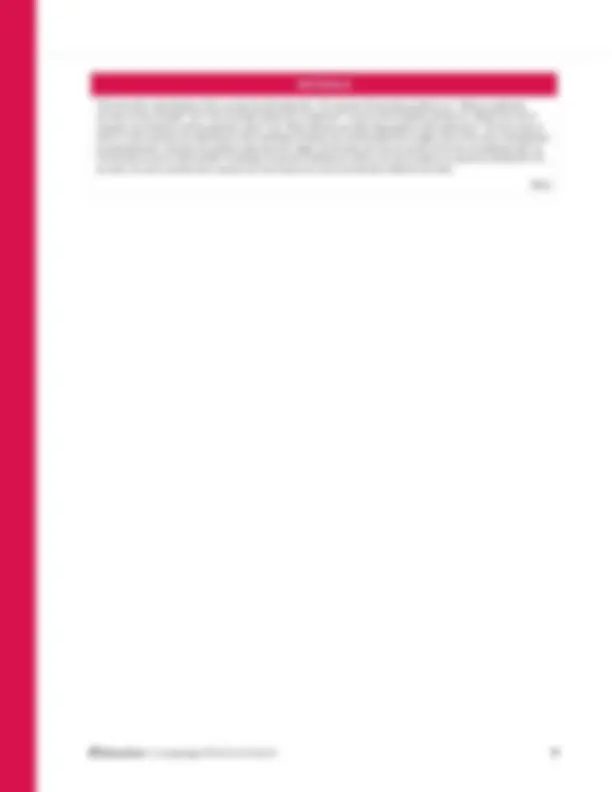
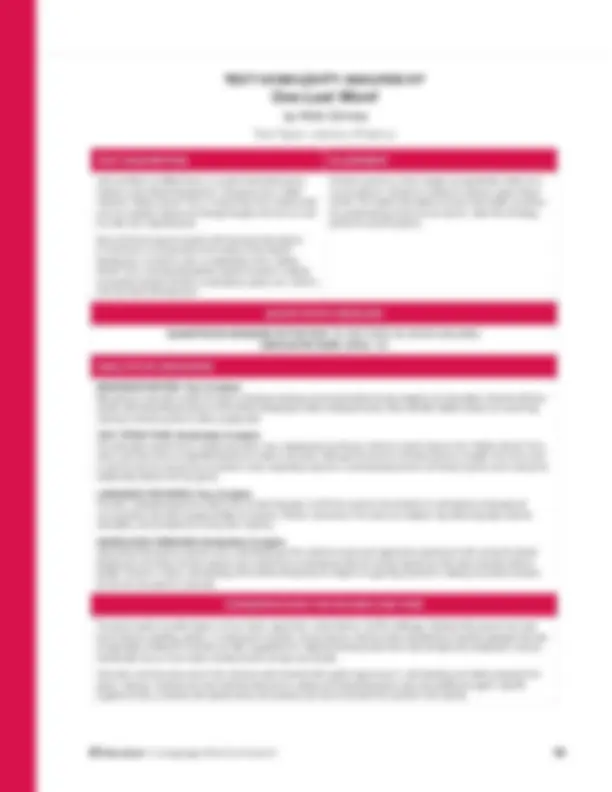
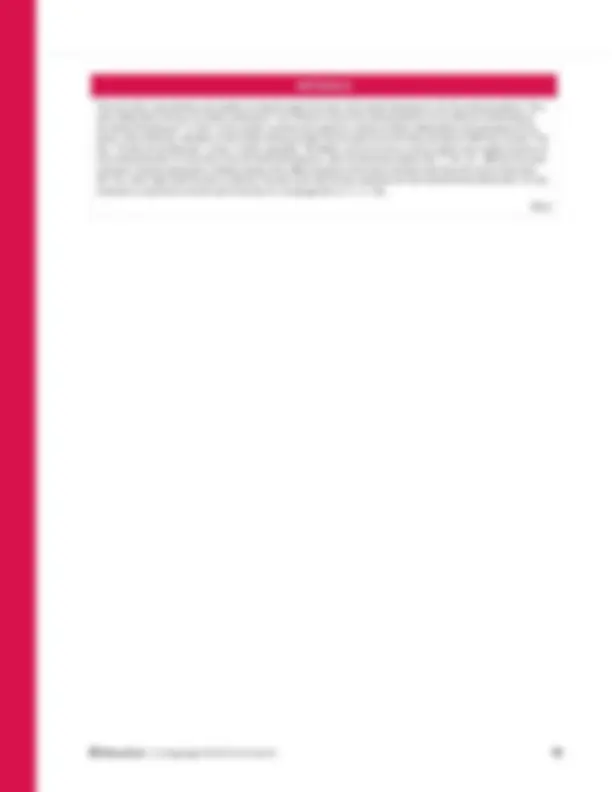
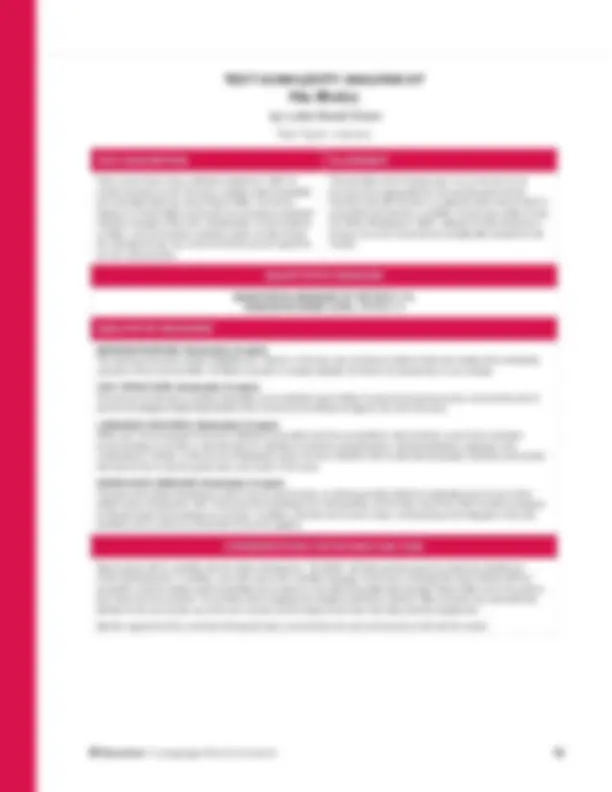
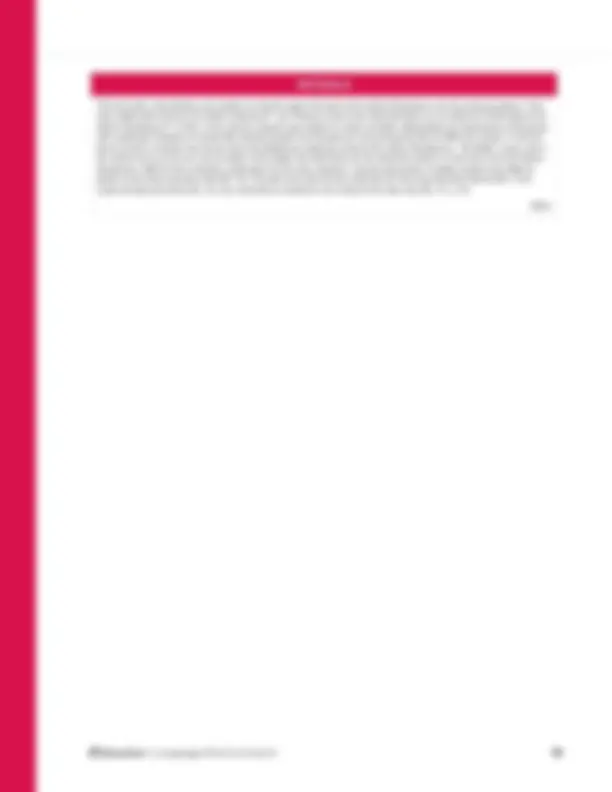
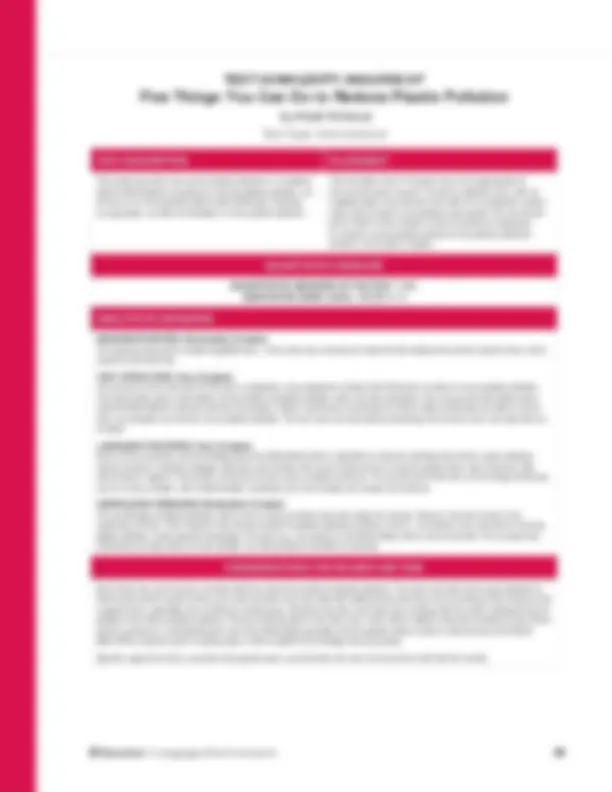
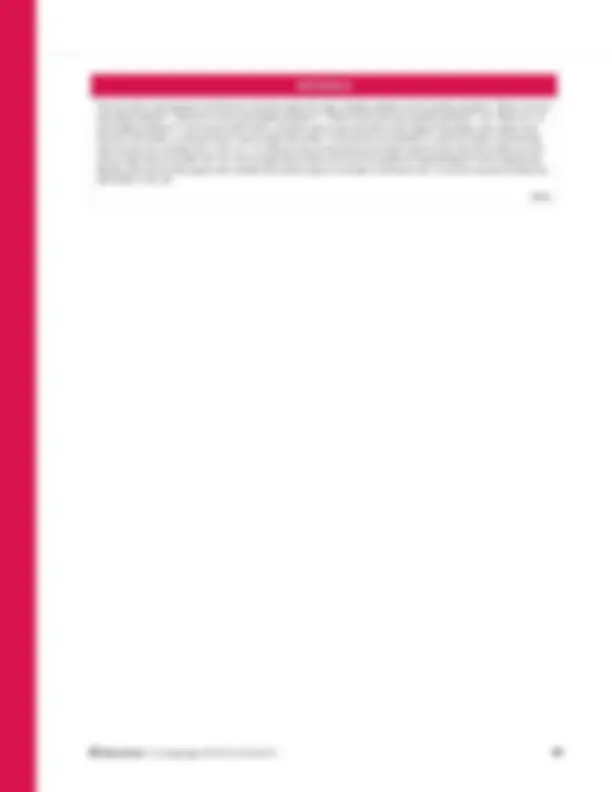
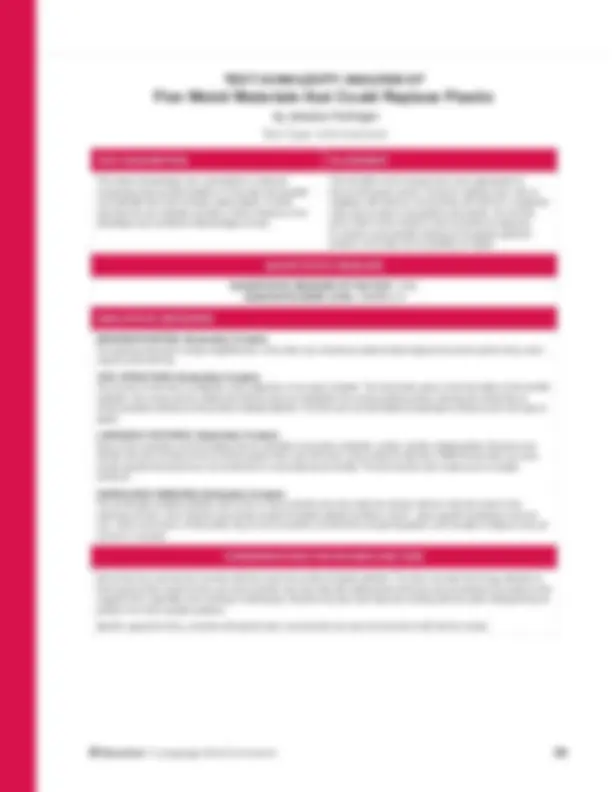
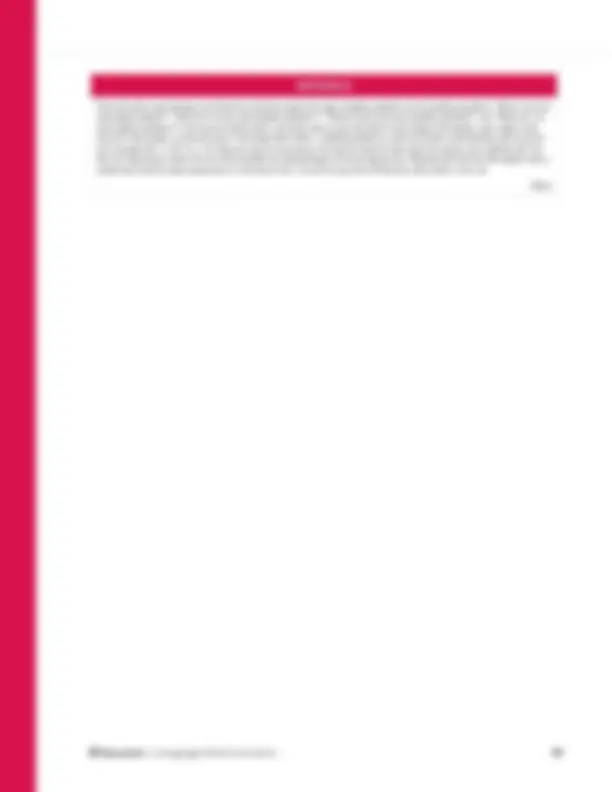


Study with the several resources on Docsity

Earn points by helping other students or get them with a premium plan


Prepare for your exams
Study with the several resources on Docsity

Earn points to download
Earn points by helping other students or get them with a premium plan
Community
Ask the community for help and clear up your study doubts
Discover the best universities in your country according to Docsity users
Free resources
Download our free guides on studying techniques, anxiety management strategies, and thesis advice from Docsity tutors
An analysis of various texts used in a Language Arts curriculum, focusing on their text complexity and the skills students will develop while engaging with them. The texts cover diverse topics such as the Lost Children of Sudan, social contagion, poetry, and plastic pollution. Students will practice identifying central ideas, understanding new vocabulary, and analyzing the impact of word choice. The texts also support students in developing knowledge and understanding about various issues, such as the experiences of the Lost Children of Sudan, the concept of social contagion, and the problem of plastic pollution.
What you will learn
Typology: Study Guides, Projects, Research
1 / 21

This page cannot be seen from the preview
Don't miss anything!














A Long Walk to Water tells two stories, in alternating chapters, about an eleven-year-old boy and an eleven-year-old girl in Sudan. Nya’s story, set in 2008, revolves around her responsibility for walking miles each day to fetch water for her family. Salva’s story focuses on his journey as a refugee, one of the “Lost Boys” of Sudan, as he searches for his family and for a safe place to stay. Both children endure incredible hardships, which they overcome with courage and perseverance. Although set 20 years apart, Nya’s and Salva’s stories intersect at the end of the novel, when Salva is instrumental in digging a well that brings fresh water to Nya’s village. Despite its low Lexile®, A Long Walk to Water is appropriately placed at the beginning of seventh grade. The alternating plot structure; frequent changes of setting and perspective; and content that revolves around issues like drought, civil war, and displacement make this text quite complex for seventh-graders.
MEANING/PURPOSE: Very Complex The themes are subtle, develop over the course of the text, and require the reader to understand and integrate two separate storylines.. TEXT STRUCTURE: Very Complex Chapters alternate between two stories told from different perspectives, set in different time periods and different places. LANGUAGE FEATURES: Slightly Complex Reflecting the perspectives of two eleven-year-old children, the language in this text is generally easy to understand, with some occasions for more complex meaning. Sentence structure consists of simple and compound sentences but also includes complex sentences with subordinate clauses and transitional phrases. KNOWLEDGE DEMANDS: Very Complex The experiences the text portrays are likely to be uncommon to most readers. Many of the cultural elements it describes are likely to be unfamiliar as well. However, context is built within the module through additional readings and discussion.
A Long Walk to Water contains references to sensitive topics such as war (including the violent death of family members and children), displacement, family separation, hunger, dehydration (including death from lack of water), refugee camps, violent deaths from wild animals, and serious illness of family members. These issues must be carefully and sensitively discussed to give students context as they read the story. Consider speaking with students and families in advance about these issues, especially those who may have sensitivity to the topics discussed. Specific supports for ELLs, students with special needs, and students who need enrichment are included in the module.
The events in A Long Walk to Water are largely driven by the setting, and the novel is structured to move between differing perspectives. Both Nya’s and Salva’s stories are used to develop common themes. Work with this novel is designed to explore how the setting shapes the characters and plot (RL.7.3), how an author develops and contrasts the points of view of different characters in the text (RL.7.6), and how themes are developed throughout the story (RL.7.2). The novel is also used as a springboard for reading and research about the Lost Boys and Girls of Sudan and the Second Sudanese Civil War, and also as a base for both narrative and informative writing. 7M
This is a relatively brief article published by UNICEF in 1996 about the Lost Boys of Sudan. It describes the key events of the migration of about 20,000 boys who were fleeing the war in Sudan, which began in 1983, including some of the horrors they had to endure as they went from one country to another seeking refuge. This text is appropriate for this seventh-grade module. The text is relatively short, and students work with it in a supported close read so that it is accessible to all students. The text is written in such a way that it lends itself to students learning how to identify two central ideas in a text, a standard that this module addresses.
MEANING/PURPOSE: Moderately Complex The meaning of the text is mostly straightforward, with two implied central ideas. In the close read, students are asked to look more deeply at two central ideas of the text, and their close relationship to each other. The close read helps students to infer the two closely related central ideas by zeroing in on key words and concepts throughout the text. TEXT STRUCTURE: Moderately Complex The structure of this text is largely chronological, so even though some of the text is challenging, it is relatively easy to follow structurally. The first paragraph introduces and summarizes the key points of the events, and the subsequent paragraphs elaborate on and develop those ideas. LANGUAGE FEATURES: Moderately Complex Some of the vocabulary and terminology may be unfamiliar to students (displaced, migration, exodus, escalated, harrowing). Students work directly with these terms during the guided close read of the text, using context to help them. The story includes both compound and complex sentences. KNOWLEDGE DEMANDS: Very Complex The topic of the war in Sudan and the Lost Boys of Sudan (and Sudan itself) will be new to most students. In addition, the text refers to the common cultural practice of teenage boys leaving home for short or long periods of time (in a sense, migrating), which will be unfamiliar. Coming early in Unit 1, shortly after students have begun reading the anchor text, A Long Walk to Water, this text introduces background knowledge and understanding to support the understanding of the rest of the anchor text and the module itself.
Most students will be unfamiliar with the war in Sudan or even where Sudan is, so the text will be helpful. Some students may be personally familiar with aspects of the refugee experience, which may need attention. In terms of the close read, identifying two closely related central ideas will probably be new to most students, so teachers will want to be on the lookout for any further instructional needs. Specific supports for ELLs, students with special needs, and students who need enrichment are built into the module.
This text builds understanding and empathy as students explore the topic of the Lost Children of Sudan and the guiding questions, “Who are the Lost Children of Sudan, and what is their story?” and “What are the habits of character the Lost Children used to survive?” The anchor text, A Long Walk to Water, is written from the points of view of two young people deeply affected by the war, to whom students their own age will be able to relate. This text, “The Lost Boys of the Sudan,” gives important, specific background knowledge for that story. It also gives students instruction and practice in figuring out challenging new words from context (RI.7.4) and with determining two related central ideas (RI.7.2). 7M1.
Patient Zero tells the stories of the pioneers of epidemiology who risked their lives and reputations searching for the source of deadly diseases. Each chapter is a nonfiction narrative focused on the people and events of a historic epidemic. Together, these stories trace our evolving understanding of what causes disease, how it spreads, and how it can be prevented. The book highlights the brilliant, often courageous epidemiologists who challenged current thinking as they worked to unravel the mystery behind these deadly diseases. Throughout the text, specialized information, rich sections, and sidebars support students in understanding the science and human behaviors that affect epidemics This text is appropriately placed in seventh grade. The narrative style of each chapter makes the complex information conveyed accessible to readers of this age level. Sidebars and sections offer more detail about relevant scientific and historical information, making deep understanding of each epidemic both challenging and complex.
MEANING/PURPOSE: Moderately Complex The purpose of the text is implied but easy to identify. The narrative style and structure convey the basic information about each epidemic in an accessible way. TEXT STRUCTURE: Very Complex Each chapter focuses on a particular epidemic. Chapters are arranged in chronological order from the 1600s through present day. Each chapter has a narrative structure, with its story told chronologically. Needed scientific and historical information is embedded in the narrative and also interspersed in sidebars and special sections throughout the chapter. The connections between this expanded range of ideas and events are often implicit or subtle, increasing the complexity of the text. Text features help to define the type and purpose of each section and directly enhance the reader’s understanding of content. LANGUAGE FEATURES: Moderately Complex The language is largely easy to understand but also offers occasions for more complex meaning. While the vocabulary is mostly contemporary and familiar, the text contains many academic words and scientific terms. The sentence structure is often complex, with several subordinate phrases or clauses and transition words. KNOWLEDGE DEMANDS: Very Complex The text relies on moderate levels of scientific knowledge and includes a mix of recognizable ideas and abstract concepts. Outside ideas, pertinent historical facts, and relevant scientific concepts are explained in sidebars and subsections, requiring the reader to integrate information from several sections to understand each epidemic.
Patient Zero contains references to sensitive topics such as disease and death as well as the conditions that contribute to disease. These issues must be carefully and sensitively discussed to give students context as they read the story. Consider speaking with students and families in advance, especially those who may have sensitivity to the topics discussed. Specific supports for ELLs, students with special needs, and students who need enrichment are included in the module.
This text is used as a foundation for exploring the interactions among individuals, events, and ideas, as students examine the relationships among human behavior, the events of an epidemic, and key scientific and cultural ideas in a particular time and place. The narrative story of each epidemic naturally intertwines all of these factors. Throughout their work with the text, students are guided in analyzing these relationships in order to build a deep and nuanced understanding of what happens during an epidemic and why. In working with the text, students examine the wide variety of text features and structures incorporated into each chapter, as well as how major sections contribute to the whole text and to the development of ideas (RI.7.5). Students also practice determining the meanings of words and phrases, especially technical terms associated with epidemiology, and analyze the impact of word choice on meaning and tone (RI.7.4). With a solid understanding of the text in place, students trace and analyze the interactions among the individual epidemiologists or scientists, the events during the epidemics, and the ideas about disease at the time, as well as consider the mindsets, tools, and character traits that enabled the scientists to solve these medical mysteries (RI.7.3). 7M
This text builds deeper understanding of the concept of social epidemics and its relation to epidemiology. The module’s first guiding questions are, “What are epidemics, and how do they develop?” and “How do people respond to an epidemic?” A second set of guiding questions is, “What is the role of character and mindset in solving epidemic crises?” and “What methods and tools help people to solve epidemics?” The text comes in Unit 2 in which students are expanding on their knowledge of disease/medical epidemics/epidemiology to question whether social epidemics are similar. Before they read the text, students engage in conversation about how well they listen to new information (SL.7.1d). They are guided to determine two related central ideas and how to combine them into one statement (RI.7.1, RI.7.2). As they read this text, students identify key terms (L.7.4). The text also serves to build students’ knowledge of argument thinking and writing, and how to analyze an argument critically (RI.7.8). As noted, the work using this text is spread over two lessons to ensure students get sufficient instruction. Finally, the text’s argument takes issue with the argument in “Kindness Contagion,” helping students to see that scientists can sometimes disagree. 7M2.
This informational (argument) text is about the concept of social contagion. It describes research done to answer the question about whether kindness as a behavior can be contagious, and whether it can go beyond simple imitation. The scientist author and his colleagues found that in both direct imitation of others’ kind behavior, and transfer to new and unrelated situations, kindness can be contagious. Since the text is an argument, it further notes that social contagion can also be negative and harmful, but ends with a reflection on the importance of people witnessing positive (kind) social norms. This text is a solid choice for this module. The module’s topic is “Epidemics,” which includes both medical/disease contagion and social contagion. In addition, the text itself is an argument, which supports students in the argument writing they will do themselves later in the year. While much about this text will be new for students, they work with the text in a supported, guided close read, and also in two other lessons. This gives students valuable knowledge about the concepts of scientific studies and social contagion, and overall makes the text accessible to all.
MEANING/PURPOSE: Very Complex The meaning of the text is challenging. The author’s argument that kindness can be contagious is clear from the text, but his use of a counterclaim may be challenging for students. TEXT STRUCTURE: Exceedingly Complex This text uses an informational expository/argument structure that is challenging for students. Following a well-established, discipline- specific structure for science writing, the article begins with the findings of the study, then moves to some context before describing the research itself and the findings. It ends with a reflection on why these findings matter. None of this uses text features to identify the parts of the structure. LANGUAGE FEATURES: Moderately Complex Some of the vocabulary may be unfamiliar to students (conformity, broad/narrow, largesse, inhibit). In addition, the author uses phrases students will need to understand (“cascade across people,” “spread positivity”). Using context, students work directly with these words and phrases during the guided close read. The sentence structure is compound and complex. KNOWLEDGE DEMANDS: Very Complex Before reading this text, students will have read about epidemics and contagion and so will have knowledge of these concepts. However, this text is their first encounter with the concept of “social contagion.” It is also their first encounter with discipline-specific science writing (see “Text Structure”). It does use evidence/information that is concrete and will be familiar to students.
This text helps build knowledge of the concept of social contagion, which is useful for the rest of the module. Since the text itself is an argument, and the structure of the text is so challenging, students work with the text over three lessons. In the first close read lesson, students work with basic understanding and central ideas. In the next lesson, students reread the text and are guided to analyze the argument. In the final lesson, they evaluate the argument. Specific supports for ELLs, students with special needs, and students who need enrichment are built into the module.
One Last Word, by Nikki Grimes, is a book of illustrated poetry inspired by the Harlem Renaissance. The poems were created using the “Golden Shovel” form, in which lines from master poets such as Langston Hughes and Georgia Douglas Johnson are used to create new, original poems. Each of Grimes’s poems is paired with the poem that inspired it. A foreword, an introduction to the history of the Harlem Renaissance, an author’s note, an explanation of the “Golden Shovel” form, and poet biographies support students in making connections between Grimes’s contemporary poetry and “wisdom from the Harlem Renaissance.” Grimes’s poems are richly complex but specifically written for a young audience. (Grimes is a Children’s Literacy Legacy Award winner.) The book’s informative front and back matter, as well as the careful pairing of old and new poems, make this anthology perfect for seventh graders.
MEANING/PURPOSE: Very Complex Both poems in each pair contain rich layers of abstract meaning conveyed primarily through metaphor and description. Students will have worked with interpreting the poems of the Harlem Renaissance before reading the book, which will offer helpful context, but uncovering meaning in Grimes’s poems is still a complex task. TEXT STRUCTURE: Moderately Complex The book pairs a poem from a master poet with a new, original poem by Grimes. Grimes’s work is based on the “Golden Shovel” form, which uses lines from an inspirational poem to create a new poem. Although the structure of these poems is complex, the words used in both the old and new poems are printed in bold, supporting students in understanding the form of Grimes’s poems and in seeing the relationship between the two poems. LANGUAGE FEATURES: Very Complex The older, inspirational poems contain some archaic language, but Grimes’s poems rely primarily on contemporary language and use vocabulary that will be largely familiar to students. However, all poems in the book use metaphor, figurative language, abstract description, and symbolism to convey their meaning. KNOWLEDGE DEMANDS: Moderately Complex Interpreting these poems requires some understanding of the context of racism and oppression experienced both during the Harlem Renaissance and today. Grimes’s poems draw content from contemporary life and include experiences that many students will find familiar. However, a basic understanding of the Harlem Renaissance is helpful in supporting students in making connections between the old and new poems in each pair.
The poems explore sensitive topics such as racism, oppression, racial violence, and life challenges. Reading these poems may raise issues that are upsetting, painful, or confusing for students. Across lessons, teaching notes call attention to specific passages that may be especially troubling for students and offer suggestions for helping students process them with strength and compassion. Lessons intentionally focus on how writers develop themes of hope and strength. Instruction and discussion early in the module provide students with guided experiences in understanding and making meaning from poetry. However, students who have minimal experience in reading and interpreting poetry may need additional support. Specific supports for ELLs, students with special needs, and students who need enrichment are included in the module.
Students study Grimes’s poetry in conjunction with the poetry of the Harlem Renaissance. In her poems, Grimes uses the “Golden Shovel” method, whereby one line of text from a Harlem Renaissance poem becomes a part of her poetry. For example, Grimes pairs her poem “David’s Old Soul” with Langston Hughes’ “A Negro Speaks of Rivers” (which students have worked with earlier in the module). Grimes’s poems often develop themes similar to those of the Harlem Renaissance poetry, but in a contemporary context. Students study these pairings for structure, language, and theme (RL.7.2, RL.7.4, RL.7.5, L.7.4). Students also explore the “Golden Shovel” approach by writing a poem borrowing lines from another Harlem Renaissance poem. In working with this collection of old and new poems, students explore the relevance of the themes of the Harlem Renaissance in contemporary poetry and in their own lives. 7M
This text builds understanding and empathy as students explore the topic of the Harlem Renaissance and the guiding questions, “How does collaboration influence an artistic renaissance?” and “What are some of the historical factors surrounding and contributing to the Harlem Renaissance?” In Unit 1 of the module, students have explored a variety of artistic collaborations and expressions of the period, with a particular emphasis on themes like drawing strength from the past and overcoming adversity to fulfill one’s dreams. This text, “The Boy and the Bayonet,” comes in Unit 2 (right after “His Motto”) and so serves as a way to explore more deeply the theme of overcoming adversity in a short story from the Harlem Renaissance, which students also explore (RL.7.1, RL.7.2). With its three main characters, students get practice in looking closely at the different points of view these characters hold about the events of the story (RL.7.6), which helps build the story’s meaning. They also work with the story elements and how those elements interact (RL.7.3). Key vocabulary is examined in the third part of the story in a Language Dive (L.7.1, L.7.4b). 7M3.
This is a short story from a collection published in 1920. Its central characters are Mr. Durmont, a wealthy white industrialist, and a teenaged black boy named Robert Hilton. Durmont is staying in a remote Maine community and must get an important business message to New York. Unexpectedly, he has to depend on Hilton, who has invented a wireless system, to help him get the message through. As a result, Durmont’s eyes are opened to his own racial prejudice. This text falls in the 6–8 grade band. It is on the low end of the band and is appropriate for this seventh-grade module. Students work with the text in a supported close read so that it is accessible to all students. In addition, the text was written during the Harlem Renaissance (1920), making it function almost as a primary source for the period and exceptionally valuable for this module.
MEANING/PURPOSE: Moderately Complex The meaning of the text is mostly straightforward. However, in the close read, students are asked to look more deeply at the contrasting characters of Durmont and Hilton. As Hilton’s character is revealed explicitly, Durmont’s own perspective on race changes. TEXT STRUCTURE: Moderately Complex The structure of this text is narrative sequential, so it is relatively easy to follow. It does include several scenes, and students need to see the chronological relationship between them, the first scene setting the stage for the rest of the story. LANGUAGE FEATURES: Moderately Complex While much of the language of the text is dialogue/conversation (and thus accessible to most students), some of the vocabulary and terminology are archaic or will otherwise be unfamiliar to students (prognostication, ultimate destination, telegraph, lurid, contemptuous, wireless, a reference to a Shakespeare quote, the term colored to refer to dark-skinned people). Students work directly with these terms during the guided close read of part I of the story. KNOWLEDGE DEMANDS: Moderately Complex The topic of the Harlem Renaissance will be new to most students, as will the generally hopeful and optimistic tone of much of the artistic works of that period. Unit 1 introduces this knowledge and understanding, and the close read of the 1920 narrative is designed to help illuminate this knowledge for students. In addition, students need to have a basic understanding of the telegraph of the early twentieth century (which an introduction to the text supplies).
Most students will be unfamiliar with the Harlem Renaissance. “His Motto” will help students grasp the context and significance of this historical period. In addition, even with some of its unfamiliar language, the text has a message that most students will find accessible—that the wealthy white industrialist has to depend on the skill of the polite black teenager Robert Hilton and is thus able to learn about his own prejudice. The narrative text is engaging and empathy-building for students. Many students may need particular attention to the now-archaic use of the word colored, and the design of the close read helps students navigate this. Specific supports for ELLs, students with special needs, and students who need enrichment are built into the module.
Trash Vortex is an informational text that explains the dangers of plastic pollution, how plastic pollution became such a widespread problem (particularly in our oceans), and what can be done to reduce pollution. The author illustrates her points with photographs, illustrations, and diagrams. The book uses facts, statistics, and concrete examples to present the problem and possible solutions. Despite its large print and engaging visuals, Trash Vortex is a complex text with a Lexile®^ at the top of the 6–8 grade band. The text is qualitatively complex as well, with an emphasis on scientific concepts, a fair amount of challenging academic and domain-specific vocabulary, and a heavy reliance on statistics and diagrams. The text is appropriately challenging for the end of the seventh-grade year.
MEANING/PURPOSE: Moderately Complex The purpose of the book is implied but easy to identify. Although many of the concepts presented are challenging, well-chosen photographs support the reader’s understanding throughout the text. TEXT STRUCTURE: Very Complex The text begins with the ocean journey of Captain Charles Moore and his discovery of plastic floating in a remote section of the Pacific Ocean. The questions, observations, and discoveries of Captain Moore are used as a touchstone throughout the book. The text is divided into four chapters; the purpose of each chapter and the connections among them are often subtle and must be inferred. The text exhibits some discipline-specific traits. Text features directly enhance the reader’s understanding of content. Graphics, pictures, tables, and charts support or are integral to understanding the text, and a timeline, glossary, and source notes appear at the end of the text. LANGUAGE FEATURES: Very Complex The vocabulary in this text is often complex; the author frequently uses scientific and mathematical terms that are likely to be unfamiliar to most students. The language is also complex; the text contains many complex sentences with several subordinate phrases or clauses and transition words. KNOWLEDGE DEMANDS: Moderately Complex This text is anchored in familiar examples and relies primarily on common practical knowledge. The author includes a mix of simple and more complicated, abstract ideas. However, some discipline-specific content knowledge is needed to understand both the problem and proposed solutions. The text contains some references to outside ideas, making moderate demands on the reader.
Throughout the book, the author presents evidence about the harms that plastic pollution can cause to the environment and wildlife. To help students process this information, teaching notes provide suggestions about specific questions and activities to contextualize the subject matter and empower students to address these problems. Some students may be affected by images and discussion of the suffering and harm that plastic pollution can cause. Throughout the module, support and opportunities to discuss and react to these issues are provided through engaging literacy tasks. Specific supports for ELLs, students with special needs, and students who need enrichment are included in the module.
Students use this anchor text, along with a film documentary and additional articles, to gather background knowledge about the problem of plastic pollution, as well as to explore possible solutions by reducing plastic pollution at different points in the plastic life cycle. Work with this text is the foundation for addressing three guiding questions:
This text builds understanding and interest as students explore the topic of plastic pollution and the guiding questions, “Where and how does plastic pollute?”; “What can be done about plastic pollution?”; “What is being done about plastic pollution?”; and “What can I do about plastic pollution?” In the second half of Unit 2, students write an argument about which stage of the plastic cycle makes most sense for intervention, so this text about “second-stage intervention” (reducing the use of plastic) is useful and builds understanding both of words and concepts (RI.7.1, RI.7.4, L.7.4). Because they are focusing on the author’s point of view about the problem and the various steps that can be taken (RI.7.6), they are beginning to think in terms of the benefits and disadvantages of various approaches. Working with this text will support both a debate that students begin to undertake in this lesson (SL.7.4) and the argument writing they will do later in the unit. 7M4.
This article acknowledges how useful plastic is while also recognizing what a problem plastic is. It describes five possible new materials that could someday replace plastic. It briefly describes the new materials and offers a bit of reflection on the advantages (and sometimes disadvantages) of each. This text falls in the 6–8 grade band and is appropriate for this seventh-grade module. The text is relatively short, with an engaging, informal tone, and students work with it in a supported close read so that it is accessible to all students. It is the first text in Unit 2 of the module in which students are beginning to consider some possible solutions to the plastics pollution problem, so its topic and accessibility are helpful.
MEANING/PURPOSE: Moderately Complex The meaning of the text is mostly straightforward. In the close read, students are asked to look deeply at the author’s point of view, which requires some inferring. TEXT STRUCTURE: Moderately Complex The structure of this text is subtopical, using categories of new types of plastic. The introduction gives a brief description of the benefits of plastic, then moves into the related idea that it is also true that plastic has caused problems before reaching the central idea of various possible solutions to the problem of plastic pollution. The text uses concrete labels/subheadings to introduce each new type of plastic. LANGUAGE FEATURES: Moderately Complex Some of the vocabulary and terminology may be unfamiliar to students (malleable, wonder, durable, biodegradable). Students work directly with some of these terms during the guided close read of the text, using context to help them. While the text does use some domain-specific technical terms, the overall tone is conversational and familiar. The text includes both compound and complex sentences. KNOWLEDGE DEMANDS: Moderately Complex The overall topic of plastic pollution will be new to many students when they begin the module. However, this text comes in the beginning of Unit 2, when students have already studied the plastic pollution problem in Unit 1. Some specific knowledge in the text (e.g., about mushrooms, shrimp shells) may be new to students, as well as the concept that plastic could actually be replaced (not just reduced or recycled).
By the time they read this text, students will know about the problem of plastic pollution. The close read asks them to pay attention to inferring the author’s point of view, and some students may need help with making those inferences and connecting to the evidence that supports them, especially when working in small groups. Students may also need help when working with the author distinguishing her position from other possible positions. Specific supports for ELLs, students with special needs, and students who need enrichment are built into the module.